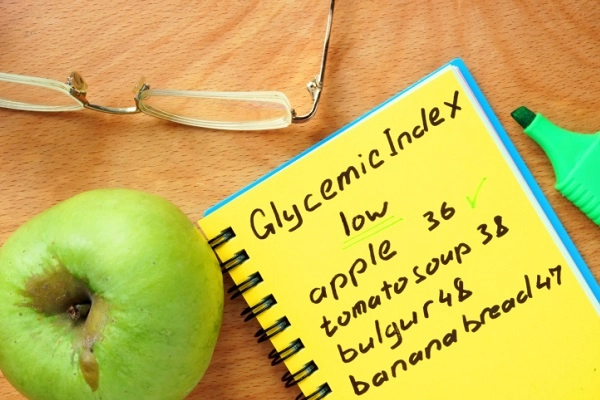Get off the blood sugar roller coaster


If you’ve given a toddler a candy bar, you’ve seen the blood sugar roller coaster in action—one minute they’re bouncing off the walls; half an hour later they’re asleep.
Your body performs best when your blood sugar is kept relatively constant. When it’s too high, your brain signals your pancreas to release insulin, which will lower your blood sugar—often by converting it into stored fat. When blood sugar gets too low, you may feel tired and irritable.
The theory behind the glycemic index is to help you get off the roller coaster by choosing foods that have the least impact on blood sugar.
The connection between sugar and carbs
The glycemic index (GI) is a number between 0 and 100 that rates how eating a food affects your blood sugar.
- High-GI foods cause blood sugar levels to spike quickly and then crash.
- Low-GI foods have a more gradual effect on blood sugar.
Sugar and carbohydrates are closely linked in the body. Carbohydrates are found in sweets, starches (such as bread, rice and pasta), starchy vegetables (such as potatoes, corn and peas), fruit, sugar-sweetened beverages and many dairy products. All carbohydrates are broken down into sugar by the body eventually, but the body converts high-GI carbohydrates into sugar faster than low-GI carbs.
A food’s GI is often higher the more its ingredients have been processed, as many of the examples below show.
|
High-GI foods (70 or higher) |
|
Medium-GI foods (56 to 69) |
|
Low-GI foods (55 or lower) |
|
|
Wonder bread® |
73 |
50% cracked wheat kernel bread |
58 |
100% stone-ground whole-wheat bread |
51 |
|
Instant oatmeal |
83 |
Raisin Bran® |
61 |
Steel-cut oatmeal |
55 |
|
Gatorade |
78 |
Cranberry juice cocktail |
68 |
Unsweetened apple juice |
44 |
|
White rice |
89 |
Couscous |
65 |
Brown rice |
50 |
|
Watermelon |
72 |
Banana (ripe) |
62 |
Grapefruit |
25 |
|
Instant mashed potatoes |
87 |
Kraft Macaroni and Cheese® |
64 |
Green peas |
51 |
GI is just part of the picture
Glycemic index is one tool for making healthier choices, but studies also show that the total amount of carbohydrates you eat is a stronger predictor of your blood sugar level. That means that overeating low-GI foods will put you on the roller coaster just like eating high-GI foods.
There is no one diet or meal plan that works for everyone. The important thing is to find a meal plan that is tailored to your preferences, lifestyle and health goals. Whole grains; legumes; vegetables; fruits; milk; and Greek, plain, or light yogurt are healthful foods to include in moderation in your eating plan.
Your primary care doctor and the health educators at Salem Health’s Community Health Education Center are excellent resources for scientifically proven nutrition advice.
Sources: American Diabetes Association, Harvard Medical School